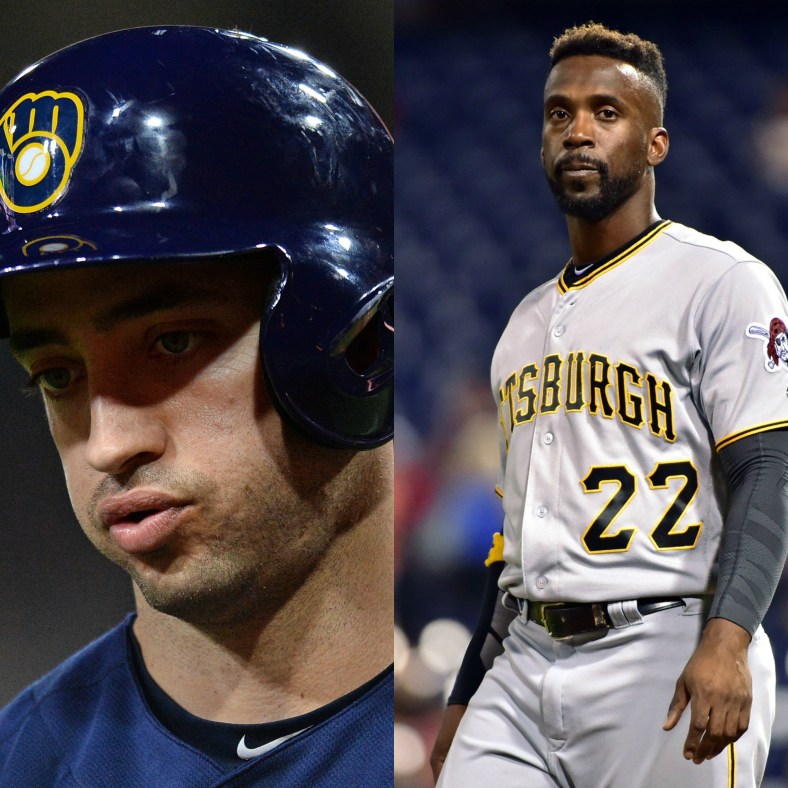
With the winter meetings imminent, we’re heading into what figures to be the busiest part of the MLB offseason. Teams that finished the 2016 season with a lot of questions are now going to get a strong sense of what they’ll look like in 2017.
We can’t say what will happen. The MLB offseason always offers a few complete surprises. But we can say what should happen. That’s our focus here.
If the Chicago Cubs are going to repeat, what do they need to do? What should teams like the Indians, Red Sox, Dodgers, Nationals and Giants do to keep that from happening?
What is the ideal blueprint for each team in the 2016-17 MLB offseason?
Arizona Diamondbacks
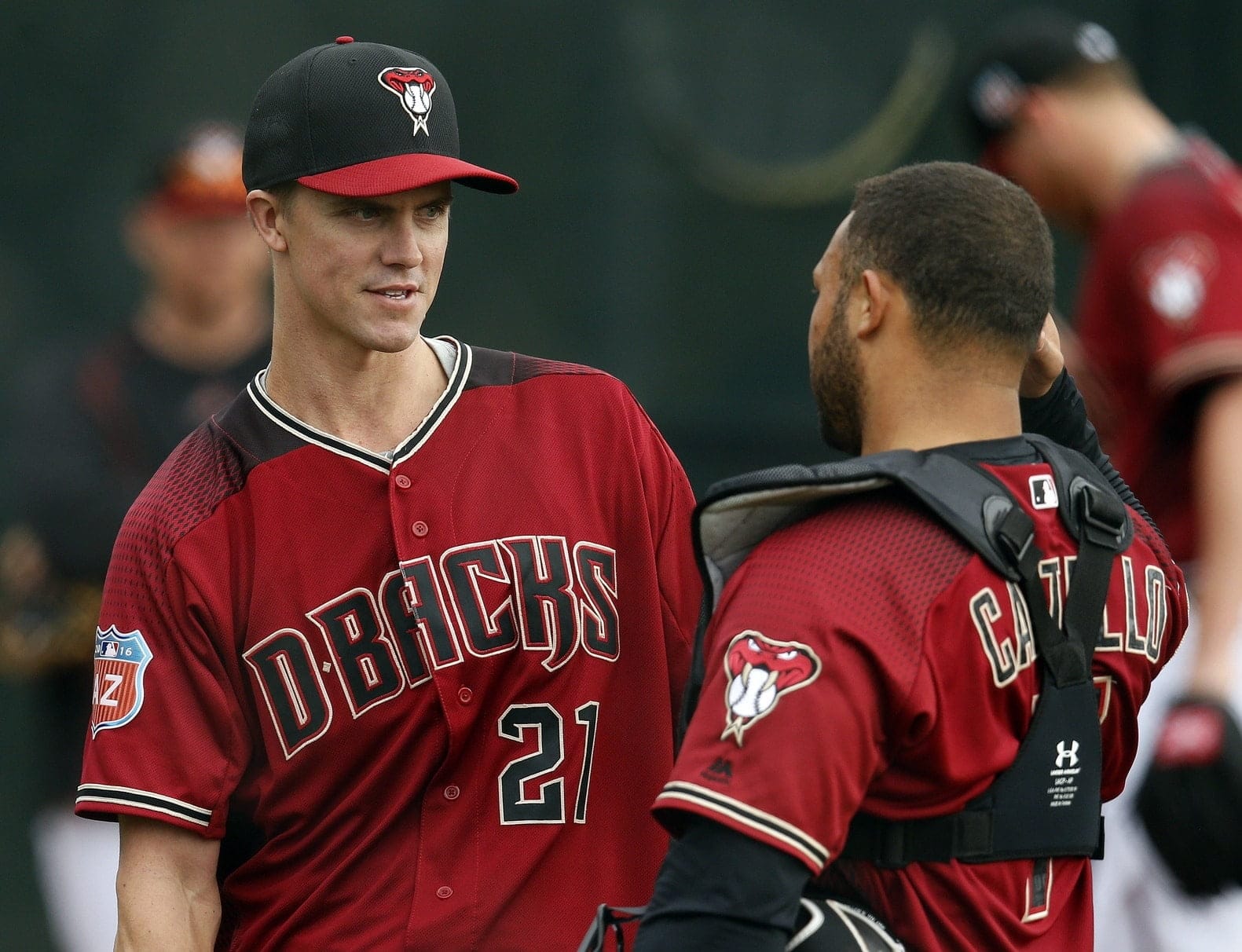
If he Diamondbacks are going to be better in 2017, they’ll need improvement in a few areas. But it starts with pitching.
Once the season begins, Arizona will need better seasons from Zack Greinke, Patrick Corbin and Shelby Miller.
The acquisition of Taijuan Walker was a step in the right direction. But in reality, the Diamondbacks still need another arm at the front of the rotation. Since this is not a great market for free agent starting pitchers, that will probably have to come in the form of a trade.
Given how poorly the big moves of 2015-16 offseason worked out, Arizona will likely be (understandably) hesitant in that regard.
The Diamondbacks will also need to solidify the bullpen, which was one of baseball’s worst in 2016. Blowing a big amount of the budget on a stud closer will not do the trick, either. If the bullpen is going to be formidable, it will need three or four new arms.
Once the pitching is addressed, Arizona can turn its attention to a few weak spots on the offense. On the infield, the Diamondbacks need an upgrade up the middle. In the outfield, it’s on the corners.
But in reality, this starts and stops with the pitching. That has to be fixed. If that can’t happen, Arizona will toil in mediocrity for another year in the National League West.
Atlanta Braves
Getting a full season from Dansby Swanson and Matt Kemp will help, but Atlanta still needs to deepen its offense.
One source of need is in the outfield. The good news is that with Kemp and Ender Inciarte, the Braves are flexible. Kemp can play either corner spot while Inciarte can play all three outfield positions. Signing someone like Dexter Fowler would make a lot of sense.
The third base position can also be upgraded. Unfortunately, behind Justin Turner, the market is fairly bare at the hot corner. Turner is 32, so Atlanta shouldn’t make him a big priority unless its planning on contending this year — which would be quite challenging.
Much like the Diamondbacks, the Braves will only contend if they pitch better. Adding R.A. Dickey, Bartolo Colon, and Jaime Garcia helps the depth of the rotation. But more needs to be done at the front end.
A serious upgrade to the starting pitching will only occur with a trade. The bullpen can be improved on in free agency.
As it stands now, Atlanta’s bullpen makes it fairly vulnerable in the late innings. A young team that’s learning how to win needs to pull close games out in the later innings. Right now, the Braves’ bullpen isn’t strong enough to let that happen.
Baltimore Orioles
Given the kind of year he just had, bringing back Mark Trumbo might seem like a priority.
How many home runs for Mark Trumbo? 3💣! pic.twitter.com/ba3qWvmsgD
— Baltimore Orioles (@Orioles) July 23, 2016
But while re-signing Trumbo wouldn’t be a bad thing, Baltimore needs to improve its offense elsewhere.
It may seem counter intuitive to say that a team that led the league in home runs (by a considerable margin) needs a better offense. But with the Orioles, it’s true.
Baltimore’s 253 home runs led the majors in 2016. Unfortunately, the name of the game is to score runs. The Orioles were only 12th in that category.
Power isn’t a bad thing, but the Orioles would do well to acquire with players who can remain effective on offense without the long ball. Chris Davis, Adam Jones, and Manny Machado will supply plenty of pop. Trumbo would add to that, but he’d need to be paired with some more well rounded offensive players.
Baltimore has gaps at both corner outfield spots, behind the plate, and at DH. So, the birds will have a few chances to bring in what they need.
Boston Red Sox
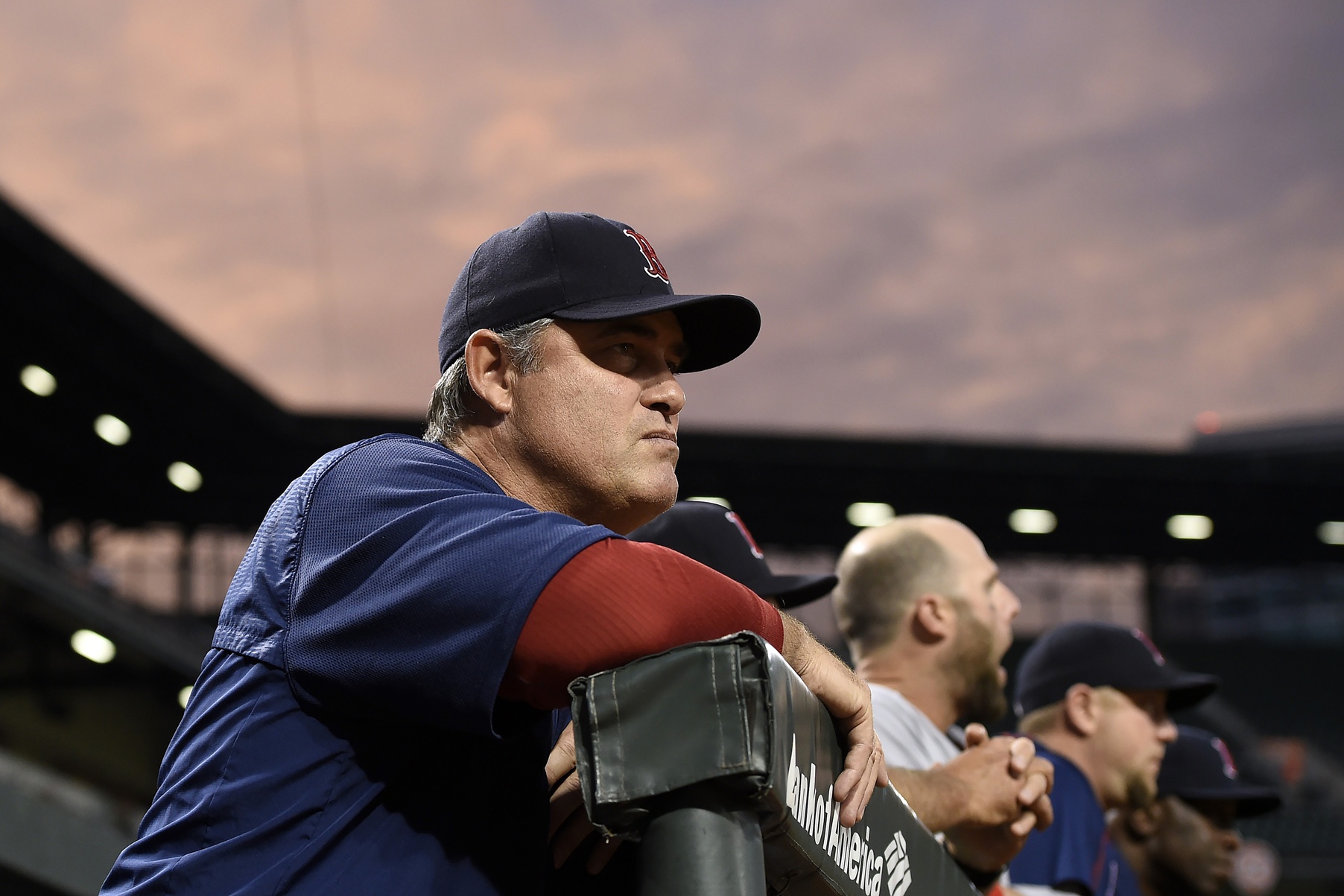
If the Red Sox fail to solidify their bullpen, they’re still playoff contenders. If they want to go anywhere in the playoffs, a bullpen upgrade is necessary.
Craig Kimbrel is coming off of a mediocre year for his standards. But with 14.1 strikeouts per nine innings, he remains one of the game’s most dominant closers. But to guarantee that a lot of games get to Kimbrel, Boston needs to add at least one good middle reliever or set up man.
Once that happens, solidifying third base is the priority. The Red Sox have plenty of options at the hot corner, but none of them are terribly reliable.
The aforementioned Justin Turner would be the sexy move to make. Also, while he’s not a natural third baseman, adding someone like Chase Utley on a short term deal would be a savvy move.
Chicago Cubs
The closer. Whether they bring Aroldis Chapman back, or sign Kenley Jansen or Mark Melancon, the champs need to land one of the free agent market’s best closers.
In truth, the Cubs don’t need to do much else. Chicago’s bullpen was partially exposed in the World Series but in reality, it’s fine.
A team can never have too much starting pitching, but the Cubs don’t need much help there. Besides, any team landing a starter will likely have to significantly overpay. That kind of move is not necessary for this team.
Chicago should focus on the closer. After that, the Cubs should maybe explore adding another quality arm to the bullpen.
Other than that, there’s no need to mess with a good thing.
Chicago White Sox
Ladies and gentlemen, meet the most complicated team of the MLB offseason. The White Sox have the bats to be 2017’s version of the Orioles. The offense is one dimensional, but guys up and down the order can pound the ball.
Discard the lumber, Tim. You won't need that where you're going. https://t.co/QFJf8K6RMi
— Chicago White Sox (@whitesox) October 1, 2016
Parity has also reigned supreme in the American League Central. Since 2010, Chicago is the only team in that division to not win a division championship.
So, add a middle of the rotation starter, a guy in the bullpen, and a few more offensively diverse outfielders, right?
It’s not that easy.
The White Sox haven’t won the American League Central since 2008. In fact, Chicago has not even enjoyed a winning season since 2012.
They also have a clear rift with their best player, Chris Sale. In spring training, Sale let it be known that he stood with Adam LaRoche in the feud that led to LaRoche’s sudden retirement.
In July, Sale had an incident when took a knife to his team’s throwback jerseys before a game.
This isn’t a typical feud between a star and his front office that can be easily fixed. These antics go deeper.
On paper, Chicago can compete in 2017 with Sale. But at this point, it’s fair to wonder if that relationship can be fixed.
It may hurt to trade a player like Sale. But in reality, it’s the best thing to do. The White Sox offensive blueprint should start with trading Sale and building a deeper nucleus.
Cincinnati Reds
The Reds don’t figure to be terribly competitive in 2017. They just don’t have the talent and the National League Central is strong.
Cincinnati really needs to entertain the idea of trading both Joey Votto and Brandon Phillips. Granted, that won’t be easy. Votto has a full no trade clause, while Phillips’ status as a 10-and-5 player gives him the same protection. To make a trade, the Reds would have to convince both guys to approve.
As tough as that may be, both Votto and Phillips have to understand that Cincinnati will not be competing for a championship any time soon. Convincing a veteran player to leave a losing team and go to a contender at the end of his career should be doable.
Trading Votto would open the door for the Reds to move Adam Duvall to first base, where he’d be better off. That would open up left field for Jose Peraza, who should be an every day player in 2017. Trading Phillips would open up second base — another place Peraza can play. Additionally, that route would give youngster Jesse Winker a clear starting job — in either corner outfield spot.
Trading Votto and Phillips would also help the Reds become deeper, which will be necessary to compete in 2018 or 2019.
Cleveland Indians
Pitching wise, Cleveland could not be much better. The Indians bullpen was stellar in the 2016 postseason. All of the key players from that run return in 2017. When healthy, the Tribe has one of the American League’s best starting rotations, as well.
The offense, though, can use some work.
If the Indians can’t bring Mike Napoli back, they’ll need to find someone who can match his presence in the heart of the order. Napoli scored 92 runs, drove in 101, hit 34 homers, and slashed at .239/.335/.465. That’s not bargain basement production.
Additionally, the outfield needs a face lift. A healthy Michael Branley will help, but Cleveland still looks to be one outfielder short.
A player like Rajai Davis, Angel Pagan, or Colby Rasmus would go a long way towards fixing that.
Colorado Rockies
While the Rockies haven’t competed in a while, they’ll enter 2017 with a realistic sense of optimism.
In Nolan Arenado, they have one of the game’s best players. The left side of the infield will only get better with the return of Trevor Story.
#TBT to #hiSTORY: Trevor Story tied the @MLB rookie record for home runs in April. https://t.co/mbfuZEicHj
— Colorado Rockies (@Rockies) November 18, 2016
Now, Colorado certainly has holes. The most consistent hole is the starting pitching. But in reality, it will take a special pitcher to be able to beat Coors Field when making half of his starts there. That pitcher just does not exist on the free agent market this year.
What the Rockies can do is bolster their relief pitching. With a good bullpen, the starters can preserve their arms. If that happens, Colorado will be far less vulnerable to struggle in the second half of the year — which has become a consistent problem.
On offense, the Rockies can use some punch at first base and depth in the outfield.
Colorado’s teams are often talented. The problem is that, for some reason, Rockies players have been consistently susceptible to injuries over the years.
So, whether its on the pitching staff or in the lineup, Colorado’s ideal offseason goal should be to develop a deeper roster. That way, it may not be so vulnerable when the seemingly inevitable injuries happen.
Detroit Tigers
While it’s yet to make any big moves, Detroit seems to be intent on selling a good deal of its veteran talent this offseason. Some of those potential trades may be painful for the Tigers and their fans. Still, selling is the right move at this point.
Victor Martinez will be 39 on opening day. Justin Verlander will be 34, while Miguel Cabrera will turn 34 in the early weeks of he 2017 season. This team is now four full seasons removed from the one that won the American League Championship. It’s two full years removed from winning four straight American League Central titles.
The Phillies have gone through this recently. Detroit should follow that example of what not to do.
Philadelphia had a nucleus that won five straight National League East titles from 2007-11, consecutive National League pennants in 2008 and 2009, and a World Series in 2008. Eventually, that group got old.
Because the Phillies held onto that group so long, their rebuilding process was significantly delayed. Philadelphia hasn’t made the playoffs or enjoyed a winning season since 2011. Only now can we finally say that the Phillies are on the upswing again.
Keeping a group of players together is one thing. But when that group gets north of 30 and goes through a few down years in a row, it’s probably time to move on.
That’s what should be happening in The Motor City during this offseason.
Houston Astros
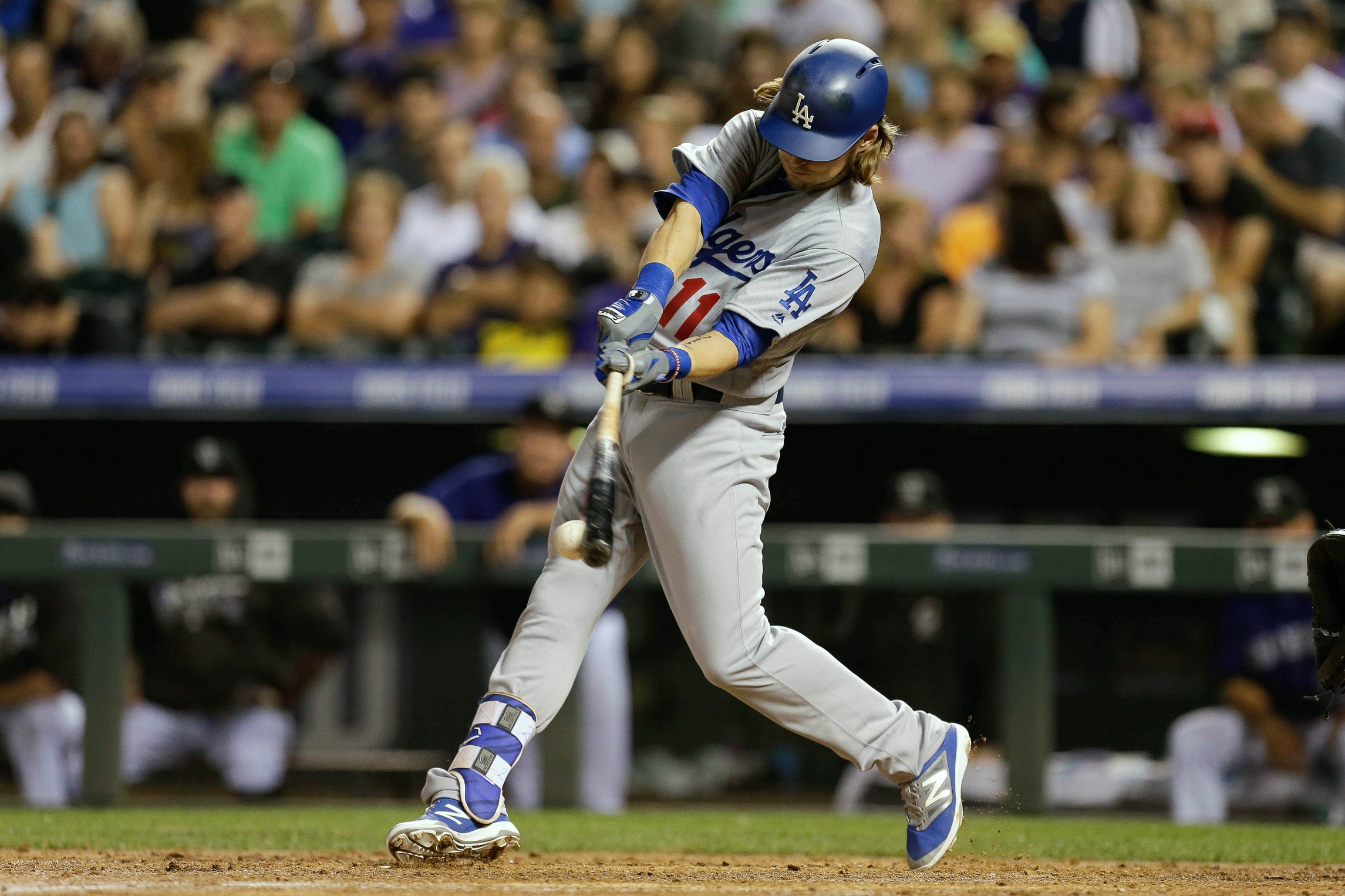
With players Jose Altuve, Carlos Correa, George Springer and Dallas Keuchel, this may be the American League’s most-talented roster.
But given that the Astros watched the 2016 postseason from home, Houston can definitely improve heading into 2017.
Unless the Astros see something in Yulieski Gurriel that we haven’t seen yet, a consistent bat at first base is a necessity.
A corner outfielder is also necessary. At the moment, Houston is probably looking at Josh Reddick and Jake Marisnick starting on the corners. In case one or both of those guys struggle, the Astros need a good fourth outfielder.
Otherwise, Houston is pretty solid. The starting pitching rotation has some question marks, but looks like one of the better ones in the American League. Like most teams, the Astros can certainly improve on their bullpen, as well — but they don’t need to break the bank to do so.
Houston has a lot of young talent. If the Astros can build off of that, a deep October run is certainly possible in 2017.
Kansas City Royals
In 2014, the Royals lost a heartbreaking seven-game World Series. In 2015, they got back to the Fall Classic and won. Yet, the five season stretch from 2014-18 can still be considered a disappointment.
How is that possible?
Quite frankly, the starting pitching is well below what it needs to be. Heading into 2017, Kansas City is probably two starters short of having a true playoff contending team.
The bullpen is still good, but not quite as deep as it was in 2014-15. As presently constructed, the Royals don’t have the starters to go deep into games consistently. That will force a strong, but thin bullpen to be overused, which is not a sound strategy.
Whether via trade or free agency, Kansas City will need to land at least two starting pitchers that can, if nothing else, eat innings.
The Royals have question marks at the designated hitter position, as well as in right field. But the team is talented enough to overcome those. Contending with mediocre starting pitching, however, is nearly impossible.
Los Angeles Angels
During this offseason, you will hear various pundits suggest that the Angels trade Mike Trout. You will not read that here. Under normal circumstances, a bad team should consider playing its best player(s) as a way become a stronger, more complete team.
But Trout isn’t an ordinary good (or even great) player on a bad team.
Position players with 40 or more WAR through age 24:
Mike Trout 48.5
Ty Cobb 46.7
Mickey Mantle 40.9That's it. That's the whole list.
— Dan McLaughlin (@baseballcrank) November 23, 2016
The rest of the roster, however, should be aggressively shopped.
The Angels are coming dangerously close to wasting Trout’s prime years. In 2016, they went 74-88 and had one of baseball’s worst regarded farm systems.
Los Angeles needs to build around Trout. He’s a once in a generation talent and still ridiculously young. How the Angels build around him is what needs to change. That has to start this offseason.
Los Angeles Dodgers
The Dodgers really need an upgrade in the top half of their rotation. Unfortunately, that’s not going to be easily done.
One, as we’ve already gone over, the starting pitching market is just not that strong. Two, for the second offseason in a row, Los Angeles is reportedly looking to cut its spending (read more here). So, the Dodgers should be attacking the trade market hard.
The White Sox should be shopping Chris Sale hard. Los Angeles should be a primary suitor. The Dodgers would also do well to pursue Sonny Gray from Oakland. Without a top tier No. 2 starter, it’s hard to see Los Angeles matching up well with the Cubs in a playoff series.
Of course, either retaining or replacing Kenley Jansen is also necessary. The Dodgers led MLB in 2016 with a 3.35 bullpen ERA. But that bullpen needs a closer. The budget restrictions may also force Los Angeles into a trade instead of paying big money for a free agent.
Though also possibly out of the price range, a reunion with Justin Turner would also be fantastic for the Dodgers. If Los Angeles can’t afford Turner, then a trade for a third baseman may be needed.
Miami Marlins
Miami is built similar to Kansas City. The bullpen should be solid. The offense has some flaws but on balance, it’s good. But Miami’s starters posed MLB’s 12th best ERA in 2016. Due to a tragedy, that’s not going to be any better unless something changes in 2017.
The loss of Jose Fernandez was tragic. He was such a positive influence on so many people that he really transcended baseball and sports, in general. The pure baseball part of his death certainly falls well short of all of that.
But there’s no way around it. The Marlins are going to have to replace a heck of a pitcher.
The signing of Edinson Volquez helps the depth of Miami’s rotation, but he’s not a top of the rotation guy.
The Marlins need to focus on finding a true No. 1 starter. Being aggressive on the trade market for a pitcher like Chris Sale or Sonny Gray will be necessary. Given that Miami’s farm system isn’t terribly highly regarded, an aggressive trade season may mean parting ways with some of the younger players on the MLB roster.
That may be hard to do. But this team is not that far away from competing for a playoff spot. Trading for an ace will be risky, but it’s a risk worth taking.
Milwaukee Brewers
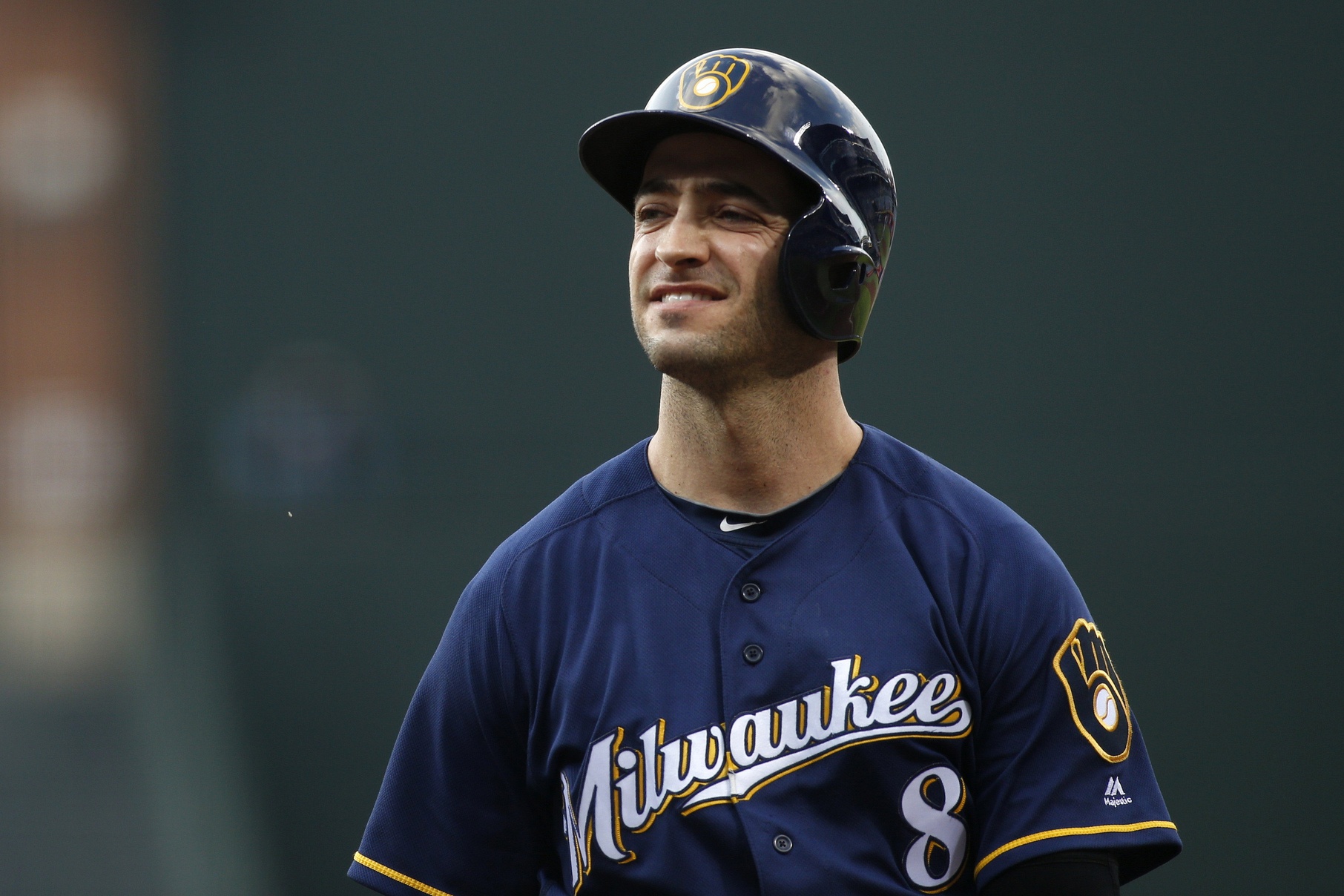
A very serious look in the mirror is required for the Brewers. How good can this team be in 2017? They share a division with baseball’s best team (the Cubs) and arguably its most consistent franchise (the Cardinals). To compete for a wild card spot, Milwaukee would also have to wade through a fairly deep group of National League contenders.
Is it possible? Sure. Is it likely? No. Realistically, it’s going to be hard for the Brewers to compete for the next few years. So, the focus here isn’t on how to compete in 2017, but rather 2018 and beyond.
That starts with one thing. Trading Ryan Braun.
Braun’s limited no trade clause complicates the matter somewhat. In 2016, temperature seemed like his primary concern.
Of course, those teams can change. Additionally, Braun can be traded to any team — he’ll just need to be convinced to go to a team not on his pre-approved list.
Milwaukee owes it to itself to try to make this happen. Braun is a great talent but is also 33 and has been slowed by injury. He may still be a top contributor on a World Series contender some day, but it’s hard to see that contender being the Brewers.
Trading Braun would also open up another spot in the outfield. Lewis Brinson, Corey Ray, Trent Clark, and Brett Phillips are all outfielders and were considered four of Milwaukee’s top seven prospects in 2016. All but maybe Clark are likely going to be in the majors within the next two years.
At a certain point, it’s time to see what these guys can do.
Minnesota Twins
There’s no way to spin this. Backing up 2015’s 83-79 campaign with 59-103 in 2016 was a disaster. But it’s important that the Twins not overreact too much to what happened.
Despite the terrible 2016 campaign, Minnesota enjoyed nice years from youngsters Max Kepler and Miguel Sano, while veteran Brian Dozier’s season was off the charts. So, while the American League Central figures to be highly competitive, the Twins do have a core that should be kept in place for a few years.
Of course, that doesn’t mean that nothing should be done.
With a 5.39 ERA, Minnesota had baseball’s worst starting rotation in 2016. A massive upgrade is required. We’ll likely see Stephen Gonsalves at some point in 2017. But as much potential as he has, Gonsalves is not going to fix the Twins’ starting rotation on his own.
Even in a poor starter’s market, Minnesota should be in on every starting pitcher until at least two new guys are added.
Additionally, a strong year from Brandon Kintzler means that the Twins have two viable closing options. Having two closers is overkill when neither is given leads to close out.
Given the number of teams who need closers, some are going to miss out in free agency. So, it would make sense for Minnesota to shop either Kintzler or Glen Perkins to a team that misses out on the big guys in free agency.
With improved starting pitching, this team has serious bounce back potential in 2017. Without it, the Twins will likely be in for another long summer.
New York Mets
We move from a team who should be looking to shop a closer to a team that should be looking to acquire one.
First of all, given his domestic violence incident, Jeurys Familia is going to be disciplined by MLB unless he’s somehow completely exonerated. All leagues have learned that this has to be taken seriously, almost regardless of how the legal system plays out.
Given the severity of the situation, the baseball element is secondary, but the Mets are going to have to find a new closer for at least part of 2017.
Secondly, it’s fair to wonder if there may be too many on field scars with Familia in New York.
A poor World Series from the closer in 2015 might have kept the Mets from a championship.
Alex Gordon living the DREAM: https://t.co/n0tVUg9pKX #Clutch https://t.co/i8wSQbzEiZ
— MLB (@MLB) October 28, 2015
New York made it back to the postseason in 2016, but Familia was no better, giving up a three-run ninth inning homer in the Mets’ 3-0 loss to to Giants.
Being a goat in consecutive postseasons is hard to overcome. Familia has been an effective regular season closer. But with a stellar group of starters returning from injury to join Noah Syndergaard, New York should be a contending team again in 2017.
To contend and go on a deep playoff run, a team needs a closer who can be counted on in crunch time.
The Mets should spend their offseason searching for that guy.
New York Yankees
As the Yankees head into the busy part of this MLB offseason, they need to keep one thought in mind.
Be smart, not splashy.
That’s sometimes been a problem in The Bronx. But during this offseason, it’s important for the Yankees to remember that they have a good core group. New York needs to add complimentary pieces to that group, not search for the big splash that grabs headlines.
So, what kind of smart moves should the Yankees make?
A good fourth outfielder is a necessity. Jacoby Ellsbury and Brett Gardner can’t be depended on to play a full season. They’re just too injury prone.
In case Greg Bird or Aaron Hicks falters, someone who can step in as a DH or first baseman would also be a wise move. A player like Conor Gillaspie would fill that role brilliantly.
World, meet Conor Gillaspie.
He just set up a @SFGiants–@Cubs #NLDS. https://t.co/Q4F1uxVpqA #WildCard pic.twitter.com/wcGDJ0VNnc
— MLB (@MLB) October 6, 2016
A fourth outfielder and Gillaspie wouldn’t make the splash that Reggie Jackson made in 1977, or Alex Rodriguez made in 2004. But moves like that would perfectly compliment a young foundation that includes Aaron Judge, Gary Sanchez, Masahiro Tanaka, and Dellin Betances. Complimenting those guys is what New York should be doing.
Oakland Athletics
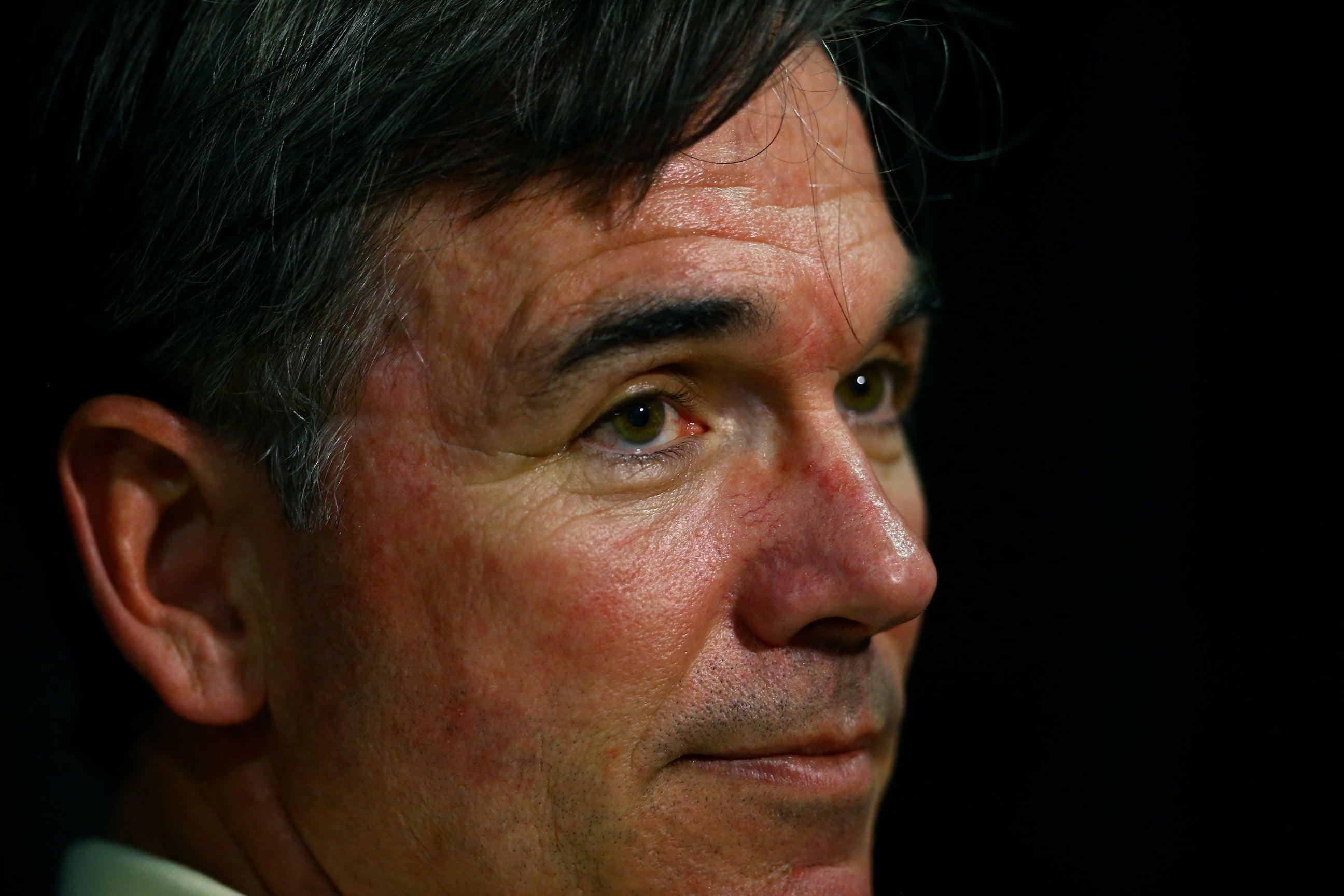
The A’s are another team that probably won’t be in the mix much in 2017. So, Oakland’s offseason should be spent trying to get into position for 2018 and beyond.
A big part of that would be trading Sonny Gray.
Now, Gray is different than Chris Sale.
The rift between Sale and the White Sox front office seems too deep to fix. With that in mind, he really needs to be traded.
Gray doesn’t have any known problems with the Athletics’ front office. So, while Oakland should trade him, it can be more patient in finding the right deal.
Coming off of a down year, this wouldn’t seem like the ideal time to make such a good trade. But the thin free agent group makes this a seller’s market for anyone looking to deal a starter.
The Athletics should be targeting outfield prospects. The signing of Matt Joyce helps matters, but Oakland’s outfield is still one of the worst in the league. Its prospects aren’t likely to change that, either.
The most important part of the A’s offseason should be to trade Gray and fill those holes.
Philadelphia Phillies
The Phillies are in an interesting spot heading into 2017. They don’t quite resemble a team like the Athletics or Reds — who are very clearly in the midst of rebuilding projects. But sharing a division with the Mets and Nationals, Philadelphia is facing a steep uphill climb if it plans on contending for a playoff spot in 2017.
The Phillies have young starters. We should see J.P. Crawford at shortstop and even more of Jorge Alfaro behind the plate in 2017. So, the already young starters are going to get even younger.
Much like the Yankees, Philadelphia should be looking to add complimentary pieces to those youngsters. A good fourth outfielder will help, in case one of the young outfielders gets hurt again. A good utility infielder will help the young infielders like Crawford and Maikel Franco stay fresh.
In truth, this group is probably too young to compete in 2017. But adding veterans to help those players develop in 2017 will help the Phillies in their long term quest to rejoin MLB’s elites in 2018 and beyond.
Pittsburgh Pirates
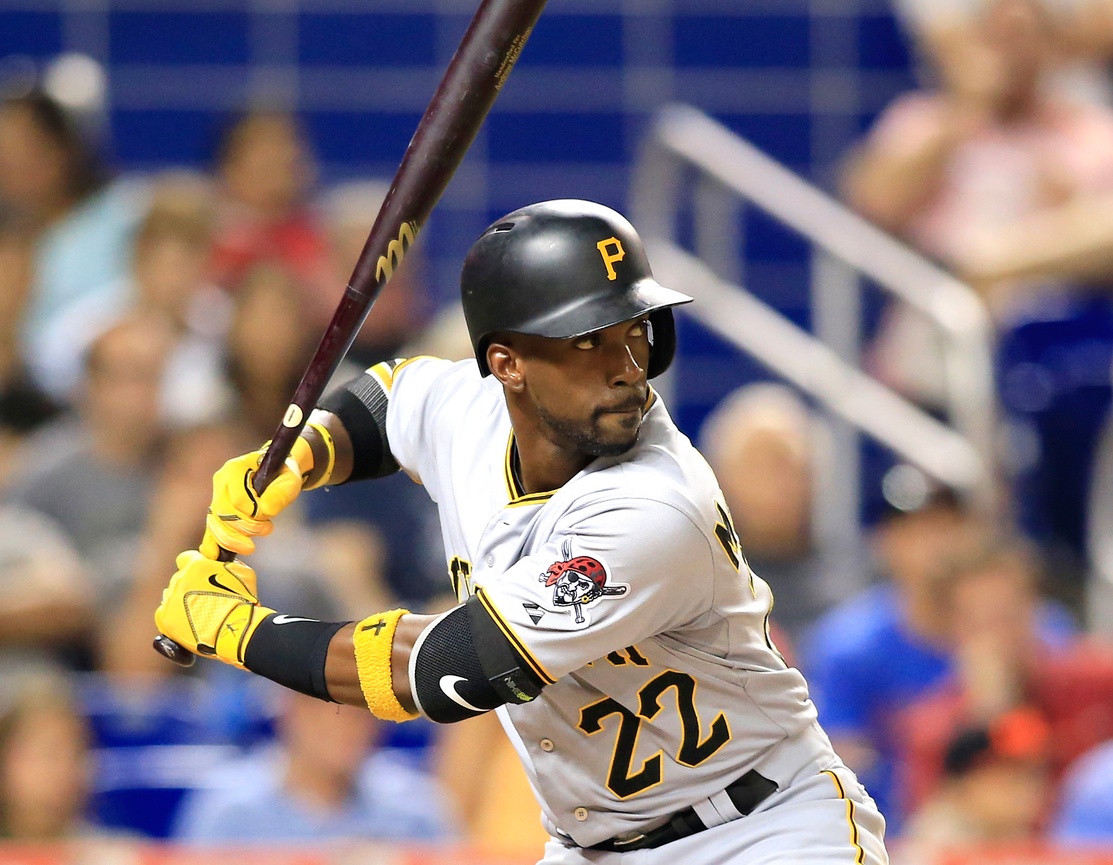
Rumor has it that the Bucs are looking to deal Andrew McCutchen (read more about that here). The main item on the Pirates offseason blueprint should be to reconsider.
It’s true that McCutchen didn’t have a great year in 2016. But through his troubles, Cutch remained the team’s best offensive player. He led the team with 81 runs, 24 homers, and his 79 RBI were second only to Gregory Polanco’s 86.
McCutchen is an incredibly important person to the Pittsburgh fan base. Before the Pirates rode McCutchen’s MVP campaign to a playoff appearance in 2013, Pittsburgh hadn’t enjoyed a winning season since Barry Bonds was the team’s best player. So, McCutchen is not only the best player on the team. To the fans, he’s the guy who led the team out of two decades of futility.
The 2016 season was undeniably frustrating for the Pirates. But from 2013-2015, this team earned three straight playoff appearances and averaged a 93-69 record.
Giving up on the best player from those teams after one down year would be a rash move.
San Diego Padres
San Diego should have one of MLB’s least active offseasons.
Most of the veterans acquired in 2015’s disaster are gone. Derek Norris should certainly be shopped. Brandon Maurer and Kevin Quackenbush may have some value to teams that lose out on the market’s top relievers.
In reality, this team should spend he 2017 letting youngsters like Austin Hedges, Hunter Renfroe and Manuel Margot gain more MLB experience.
It’s offseason should be spent trying to maximize their chances at success. That means cheap veteran backups and good clubhouse guys — but nothing more.
San Francisco Giants
The Giants first need to improve their bullpen. If there’s time after that, they need to improve their bullpen. Then, if they think about it, they should really focus on improving the bullpen.
With a good bullpen, San Francisco would have cruised to a National League West title. An average bullpen would have likely put the Giants in a battle for the title against the Dodgers. Even a bad bullpen would have been good enough to easily earn San Francisco the top wild card spot.
But with an absolutely horrendous bullpen, the Giants had to go 5-1 in the season’s final week to even claim the second wild card spot. Madison Bumgarner and Conor Gillaspie helped San Francisco get to the NLDS but fittingly, the season ended with one last bullpen meltdown.
For the win … https://t.co/u5CrSzJ86V #FlyTheW pic.twitter.com/PQTnGHkB2h
— MLB (@MLB) October 12, 2016
The Giants have to land either Aroldis Chapman, Kenley Jansen, or Mark Melancon this offseason. They could also use at least one good middle reliever or set up man.
Once that’s done, San Francisco can shift its energy towards finding a left fielder and some quality pinch hitters. But the bullpen can’t simply be a priority on the Giants’ offseason blueprint, it has to be the priority.
Seattle Mariners
With the acquisitions of Jean Segura, Danny Valencia, and Carlos Ruiz, the Mariners have already had a strong offseason.
Seattle does need some help, though, and it starts in the outfield, where the Mariners were among MLB’s worst offensive teams.
If we add up the the batting average, OBP, and slugging percentage, Seattle’s center fielders finished at .935. That was baseball’s fifth worst total in 2016. The right field number was a little better (.967), but was also the league’s fifth worst total. The right field numbers were also aided by Nelson Cruz. He played 48 games in right and slashed at .247/.343/.466. But Cruz is going to be DH’ing more and in the field less as his career progresses. That will only make right field a position of greater need.
The Mariners have to find a different look in the outfield.
With Cruz and Robinson Cano in the lineup, Seattle’s lineup should have plenty of power. But it can’t be getting so little offense from normally stout hitting positions.
It can come in the form of free agency or trades, but the Mariners offseason blueprint should include hitting the outfield market hard. Fortunately, not much else is required. Seattle is built to contend in 2017.
St. Louis Cardinals
Plenty of good teams need to improve on their pitching. But a fair amount of those have a strong starting staff and a weak bullpen, or a strong bullpen and a weak starting staff. That doesn’t apply to the Cardinals.
The St. Louis starters posted a 4.33 ERA in 2016, good enough for 13th best in the league. The Cards’ relievers had a 3.62 ERA, also 13th in the league. Now, 13th in the league is not bad — it’s just average. If St. Louis is going to compete with the Cubs in the National League Central, it will need better than average pitching.
Trading Jaime Garcia to Atlanta makes the rotation slightly thinner, but depth wasn’t the problem in 2016. The problem was at the top of the rotation.
Adam Wainwright had a 4.62 ERA and 1.40 WHIP in 2016. Given that he’s now 35 and has had two major injuries in his career, it’s more than fair to wonder if he’ll ever be a top tier starter again. The Cardinals should be aggressive on the trade market for a younger top end of the rotation guy (like Sale or Gray).
The bullpen market is deeper in free agency. Thanks to a good year from Seung Hwan Oh and the looming presence of Trevor Rosenthal, St. Louis doesn’t need a closer. But, it does need at least one quality relief pitcher.
The Cardinals had one of baseball’s best offenses across the board in 2016. That’s not something that figures to change a lot in 2017. With an improved pitching staff, St. Louis can at least contend for a postseason spot again.
Tampa Bay Rays
Much like the Padres, the offseason in Tampa should be relatively quiet. The Rays do have one potentially big trade to make, though. They could deal Evan Longoria.
But should they?
With 36 home runs in 2016, Longoria showed that he still has elite power.
.@RaysBaseball's Evan Longoria crushes a 3-run home run to in the 1st. Watch the action live on FOX Sports Sun. pic.twitter.com/vmnU1euHmd
— Bally Sports Florida & Bally Sports Sun (@BallySportsFL) September 15, 2016
Contenders like the Dodgers and Red Sox have both a need at third base and deep farm systems that Tampa could draw from.
From that respect, a trade would make sense. But like McCutchen in Pittsburgh, we have to consider the overall value to the franchise.
The Rays were awful from 1998-2007. Longoria debuted in 2008, won the American League Rookie of the Year, and was the face of that year’s American League Championship team.
That was a turning point for the franchise. Tampa went on to make three more playoff appearances from 2009-2013. Trading Longoria would officially signal the end of the era. Given how bad the era before was, slamming the door on the glory days isn’t something that can be done hastily.
Now, with the past departures of Ben Zobrist, David Price, and Joe Maddon, Tampa’s fans have no doubt gotten used to seeing beloved figures go. They can trade Longoria, it’s just not something that should be done lightly.
So, what’s the Rays’ ideal blueprint? Let the offers come to them and don’t settle for anything. If the right deal comes, Longoria should be moved. If not, Tampa should have a fairly quiet offseason.
Texas Rangers
As we’ve seen, several teams need bullpen help. Improving the late innings is a popular blueprint for the 2016-17 MLB offseason. But with the possible exception of the Giants, no good team needs to revamp its bullpen more than Texas.
Only the Twins, Diamondbacks, Phillies, Reds, and Rockies had a worse bullpen ERA than the Rangers (4.40). But none of those teams even finished close to .500. The Rangers had the best record in the American League. So, in the bullpen — an area of ever increasing importance — Texas was keeping company with some of baseball’s worst teams.
The Rangers are different from the Giants in another area, though. San Francisco needs to hit the closer market hard. Texas needs to be aggressive in the middle relief/set up man market.
That not only gives the Rangers a deeper pool to choose from, but shouldn’t cost as much money.
Still, it’s necessary.
Texas played with fire in 2016 and although the season ended with a disappointing ALDS sweep, the Rangers largely got away with it. But winning with a bad bullpen is not a strategy that can be replicated. Texas needs to revamp its relief pitching before the 2017 season begins.
Toronto Blue Jays
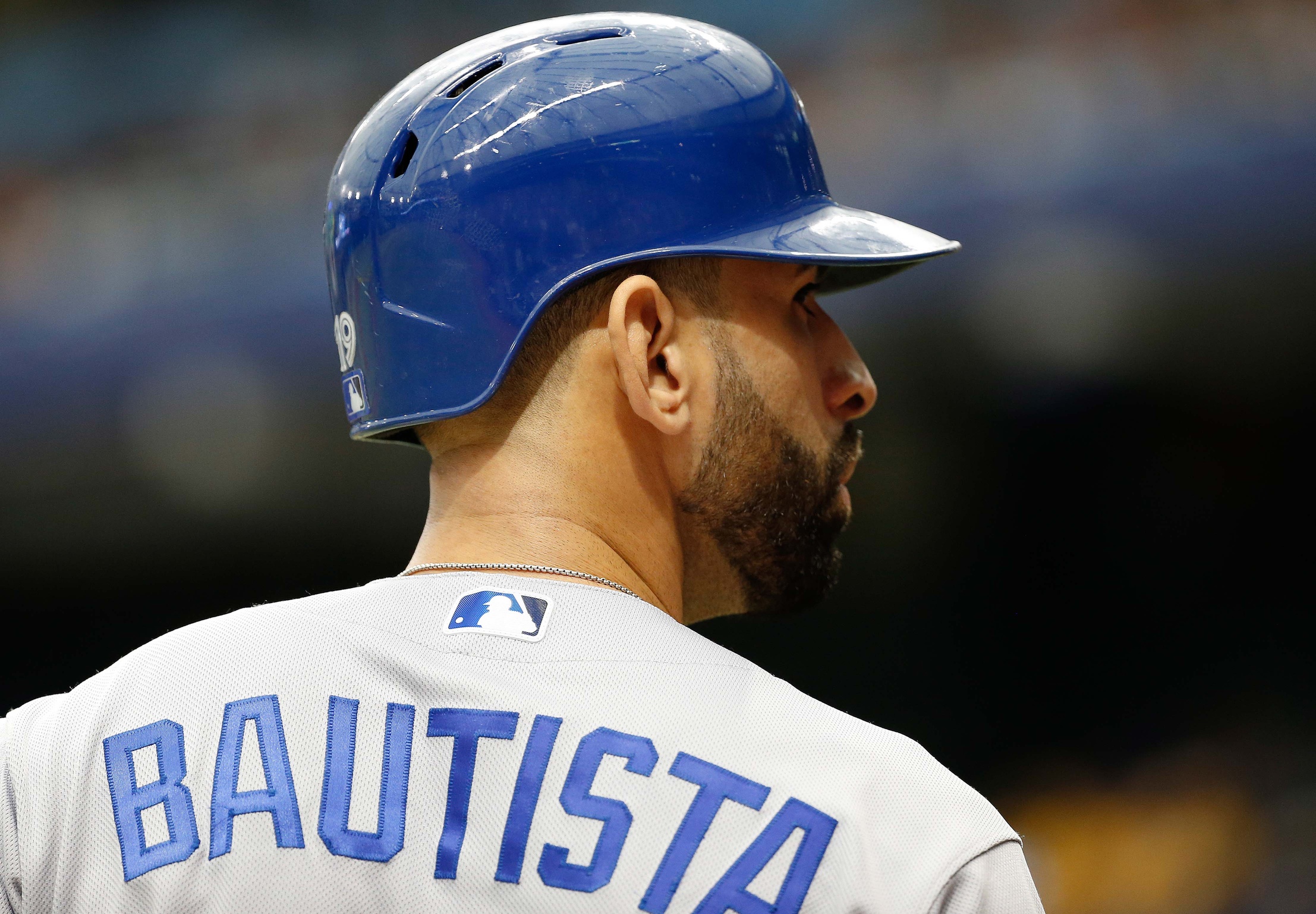
Any discussion of Toronto’s 2016-17 offseason starts with Jose Bautista and Edwin Encaracion. The two sluggers have been integral parts of the Blue Jays’ resurgence and figure to be two of the offseason’s highest paid free agents.
So, what should Toronto do?
First of all, the Jays should let Bautista walk. He’s 36 and slashed at slugged at .452 in 2016. That may not seem awful, but from 2010-2015, he slugged at .555. A dip of over 100 points is not what you want to see from a player in his mid-late 30’s. That’s not to say that Bautista will be terrible in 2017. But long term, the Blue Jays will be better letting someone else pay the huge salary he’ll surely get.
Encarnacion is a different story. Like Bautista, he’s on the wrong side of 30, but will only be 34 on opening day. He also matched his career high with 42 home runs in 2016. Additionally, while Bautista played 92 games in 2012, 118 in 2013, and 116 in 2016, Encarnacion has played in 128 games or more in every year since 2011.
Toronto should be quite hesitant to give Encarnacion a long term deal, but he should be brought back.
The money saved on Bautista can be used to add bullpen pieces. Toronto’s 4.11 bullpen ERA was only three spots better than Texas’, so it’s certainly an area that needs to be improved on.
Washington Nationals
Statistically, the Nationals were only of baseball’s best teams in 2016. No one area of the game stood out as a weakness, at all. Washington struggled again in the playoffs, but went 95-67.
The goal in this offseason is going to be to recreate that team.
That’s going to be hard to do with two key Nationals — Wilson Ramos and Mark Melancon — on the free agent market.
The closer market is strong. Whether its in free agency or trade, Washington should be able to replace (or re-sign) Melancon. It won’t be cheap, but the supply matches the demand.
The catching market is a different animal. Coming off of a 22 home run, .307/.354/.496 season, Ramos should be the offseason’s top backstop. Unfortunately, according to Ramos himself, a late season ACL tear may keep him from catching in 2017.
“Unfortunately, this injury happened so close to the end and it may affect whether I’m able to stay with a National League team or not,” he said, via Byron Kerr, MASN. “But if it’s up to me, I definitely would like to keep playing for the Nationals and play as long as I can.”
If Ramos is relegated to DH, Washington is obviously not an option.
As far as free agents go, staying in The Beltway and signing Matt Wieters is the only serious option. Otherwise, the Nationals will have to dig through the trade market, or roll the dice with Jose Lobaton and/or prospect Pedro Severino behind the plate.
Solidifying the catcher position has to be the main priority in D.C. If that gets done, the Nats will again be on a short list of World Series favorites heading into 2017.